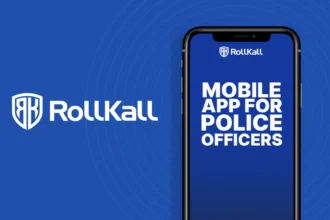Selling a financed car for a lease: All You Need to Know
Can you trade in a financed car for a lease? This is a frequent concern among car owners who are considering switching from finance to leasing. Although the procedure can appear difficult, you can make a seamless change with the correct knowledge and save money. This guide will help you make a wise decision by walking you through the key factors to consider when switching a financed car for a lease.
Gaining the Foundations
You borrow money to pay for a car you finance, then make monthly payments until the debt is paid off. On the other hand, leasing entails making monthly lease payments and renting the car for a fixed term—usually two to three years. You either return the automobile or have the option to buy it at the end of the Financed Car for a lease.
Could you trade a financed car for a lease? You can, indeed. To guarantee it’s financially advantageous, the method does, however, consist of various steps and considerations.
Methodical Guide for Trading a Financed Car for a Lease
Evaluate Your Car’s Equity: Find the current market worth of your car and then compare it to the outstanding loan balance. You have positive equity if your automobile is worth more than you owe, which you may use towards the new lease. Should you owe more than the value of the car, you have negative equity, which can complicate matters.
Get Your Payment Quote: Ask your lender for a payment quote—that is, the whole amount required to pay off your present loan. Understanding your financial situation and developing your next action depends on this number.
Research Lease Offers: Search the vehicles you are considering for lease offers. Note the down payments, monthly payments, mileage restrictions, and any extra lease expenses.
Visit Dealerships: See several dealerships to obtain trade-in appraisals and lease quotes. Dealerships will assess your financed car and make trade-in offers, which vary greatly.
Negotiate the Deal: Once you have lease quotes and trade-in values, work with the dealership. Cut the lease’s down payment or monthly payments by using the positive equity from your financed car for a lease. If you have negative equity, try to work to have it included in the new lease.
Finalize the Paperwork: Once terms have been decided upon, finish the required documentation. Make sure every element is clear, including how any outstanding loan will be managed.
Advantages of trading a financed car for a lease
Lower Monthly Payments: Leasing usually provides easier on your budget than financing a new car as it usually gives lesser monthly payments.
Access to Newer Models: Leasing lets you drive newer automobile models with the newest technologies and amenities without having to commit yourself long-term through ownership.
Warranty Coverage: Leased cars frequently come under warranty throughout the lease term, therefore lowering maintenance and repair expenses.
Flexibility: At the end of the lease, you could decide to buy the automobile, lease a new one, or just turn it in.
Considerations Before Trading
In Mileage Limits: Usually ranging from 10,000 to 15,000 miles annually, leases have mileage limits. Overrunning these restrictions can cost more. Wear and Tear: Leasing agreements have terms for wear and tear. Extra expenses after the lease could result from excessive wear. Negative Equity: Should your financed car have negative equity, leasing it could either call for a greater down payment or help lower your monthly payments.End-of-Lease Charges: Potential end-of-lease fees include disposition fees or penalties for extra miles and wear should be known to you.
Detailed Views on Important Factors
Understanding Your Equity Position: Knowing your equity position is vital. You could be positive or negative. Acting as a down payment on your lease, positive equity helps to reduce your monthly lease payments. Negative equity, then, indicates that your loan debt exceeds the value of the car.
Though it would raise your monthly payments, you can roll this difference into your next lease. To find your equity position precisely, make sure you receive a reasonable assessment of the worth of your automobile from several sources, including Kelley Blue Book or Edmunds, and then compare this to your payment quote.
Selecting a lease: Not every leasing offer is made equal. Go over the terms and conditions of the lease agreements from several dealerships attentively. Pay close attention to the car’s residual value—that is, its projected worth at least conclusion. Usually speaking, a higher residual value results in less monthly payments.
Think also about the money aspect, which is the lease’s interest rate. Throughout the lease, negotiating a reduced money component can save you a lot of money.
Impact of Credit Score: The terms of your new lease will be much influenced by your credit score. Generally speaking, higher credit scores qualify for cheaper money factor lease offers. Should your credit score have improved after you paid for your car, you may find better leasing terms than first projected.
On the other hand, if your credit score has dropped, you could have to pay more each month or have more down payment needed. Before looking for a lease, check your credit score; then, fix any mistakes on your credit record to raise your chances of getting good terms.
Calculating Total Lease Cost: Comparing lease offers requires one to take into account the whole cost of the lease rather than only the monthly payments. Add the down payment, monthly installments, taxes, fees, and any possible costs for mileage restrictions or wear and tear exceedance.
Generally speaking, a lease with a smaller monthly payment but a large down payment or limited mileage restriction might not be the greatest bargain. To have a full view of the whole cost and make a wise choice, use internet lease calculators.
Future Flexibility: Think about how your long-term goals might fit the lease terms. If you want to drive newer automobiles and want to keep within the mileage restrictions, leasing could be a terrific choice.
But if your driving needs change or if you want to relocate to somewhere where a car isn’t required, a lease’s limitations could become onerous. Make sure the lease terms fit your way of life and future intentions to prevent any problems down the road.
Conclusion
Could you trade a leased financed car? Indeed, but it calls for considerable thought and preparation. Key steps in making a good change include assessing the equity of your car, investigating lease offers, and skillful haggling. Although trading in a financed automobile for a lease can have advantages such as reduced monthly payments and access to newer models, it is vital to be aware of any negatives including mileage restrictions and end-of-lease costs. Understanding the procedure and weighing all the elements will help you to decide which best fits your driving needs and financial circumstances.
FAQs
Given negative equity, can you trade in a financed car for a lease?
Indeed, but it might complicate things. Roll the negative equity into the new lease to possibly lower your monthly payments.
When I trade in my financed car, what happens to my current loan?
As part of the trade-in process, the dealership will pay off your current loan. Should your trade-in value be less than your loan debt, you will have to pay the difference.
Can I lease a car with poor credit?
However, you could have to pay a bigger down payment and deal with higher interest rates. Negotiating with several dealerships and shopping around can assist.
Suppose I wish to purchase the automobile at the lease end?
At the end of the term, most leases include a buy option. Usually stated in the lease contract, the purchase price is what you pay to buy the car rather than have it returned.
How can I prevent the lease’s extra mileage charges?
Before signing the lease, fairly estimate your annual mileage to prevent extra mileage charges. Negotiate a greater mileage allowance at the start of the lease if you intend to drive more than the lease’s normal limit.
Should I break the mileage limit on my lease?
Should you be above the distance limit, you will probably be charged for the additional kilometers. Since these charges can be significant, keep an eye on your mileage during the lease. If you plan to over the limit, talk to the leasing business about your alternatives since they might have ways to help to reduce the costs.
Can I let someone else have my lease?
Certain leasing arrangements allow for lease transfers—that is, lease assumptions. Should you have to terminate your lease early, this can be a reasonable choice. Look into the transfer terms and any related fees in your lease.





